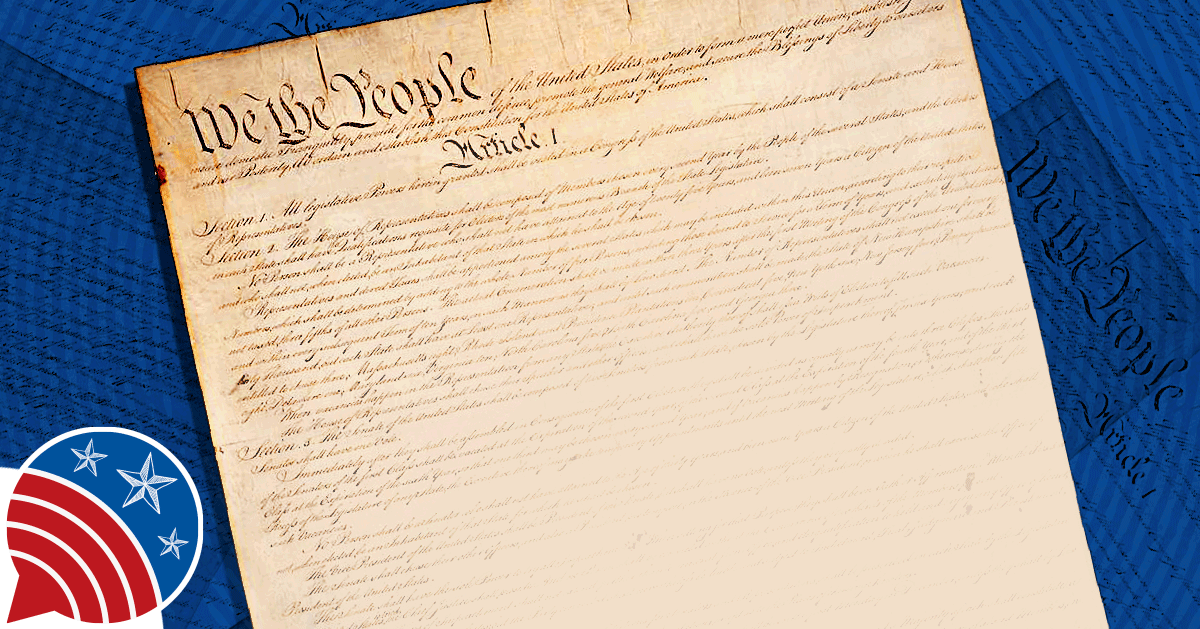
Principles of the Constitution
Take a quick trip back to the founding era to learn about the roots of representative government, limited government, separation of powers, and the many compromises that led to our Constitution. What is the distinction between a republic and a democracy? This exploration lays the groundwork for rich dialogues on government power, the ongoing tension between state and national power, and American democratic values in action, both now and over time.
Podcasts & Videos
Forms of Government: Principles of the Constitution, Part 4
Instructions
- Watch and listen to the 60-Second Civics video below. If you'd like, you can also read along using the script that appears below the quiz. Or you can turn on the video's subtitles and read while watching the video.
- Take the Daily Civics Quiz. If you get the question wrong, watch the video again or read the script and try again.
Episode Description
Dr. Donna Phillips: Welcome to the 60-Second Civics, the daily podcast from the Center for Civic Education. I'm Donna Phillips. Today we continue our series on principles of the Constitution as part of our Civil Discourse: An American Legacy project. We are joined by special guest Dr. Lester Brooks, American history professor emeritus from Anne Arundel Community College. Welcome, Dr. Brooks.
Dr. Lester Brooks: Thank you for having me.
Dr. Donna Phillips: Dr. Brooks, what type of government was produced at the Philadelphia Convention?
Dr. Lester Brooks: What we have, certainly the founding fathers and the delegates at the Philadelphia Convention had wrestled with forms of government, particularly James Madison, who had studied before the Philadelphia Convention, studied various governments. They had served under a monarchy, and they understood that there was a monarchy, there was an aristocracy, there was a democracy. But more and more of the founding fathers were thinking about the people, the people having a voice.
And so what they came up with was a Republican form of government at Philadelphia, where the people would have a voice in their own government through their representatives in Federalist number 10, part of the Federalist Papers. And this was written by James Madison, a coauthor of the Federalist Papers. He gives us a definition and he explains a republican form of government that was established in Philadelphia, where the people ruled through their representatives and a pure democracy where the people rule directly.
And he says that at the Philadelphia Convention, its republican form was the best form to reduce the harmful effects of factions.
Dr. Lester Brooks: Thank you for having me.
Dr. Donna Phillips: Dr. Brooks, what type of government was produced at the Philadelphia Convention?
Dr. Lester Brooks: What we have, certainly the founding fathers and the delegates at the Philadelphia Convention had wrestled with forms of government, particularly James Madison, who had studied before the Philadelphia Convention, studied various governments. They had served under a monarchy, and they understood that there was a monarchy, there was an aristocracy, there was a democracy. But more and more of the founding fathers were thinking about the people, the people having a voice.
And so what they came up with was a Republican form of government at Philadelphia, where the people would have a voice in their own government through their representatives in Federalist number 10, part of the Federalist Papers. And this was written by James Madison, a coauthor of the Federalist Papers. He gives us a definition and he explains a republican form of government that was established in Philadelphia, where the people ruled through their representatives and a pure democracy where the people rule directly.
And he says that at the Philadelphia Convention, its republican form was the best form to reduce the harmful effects of factions.






